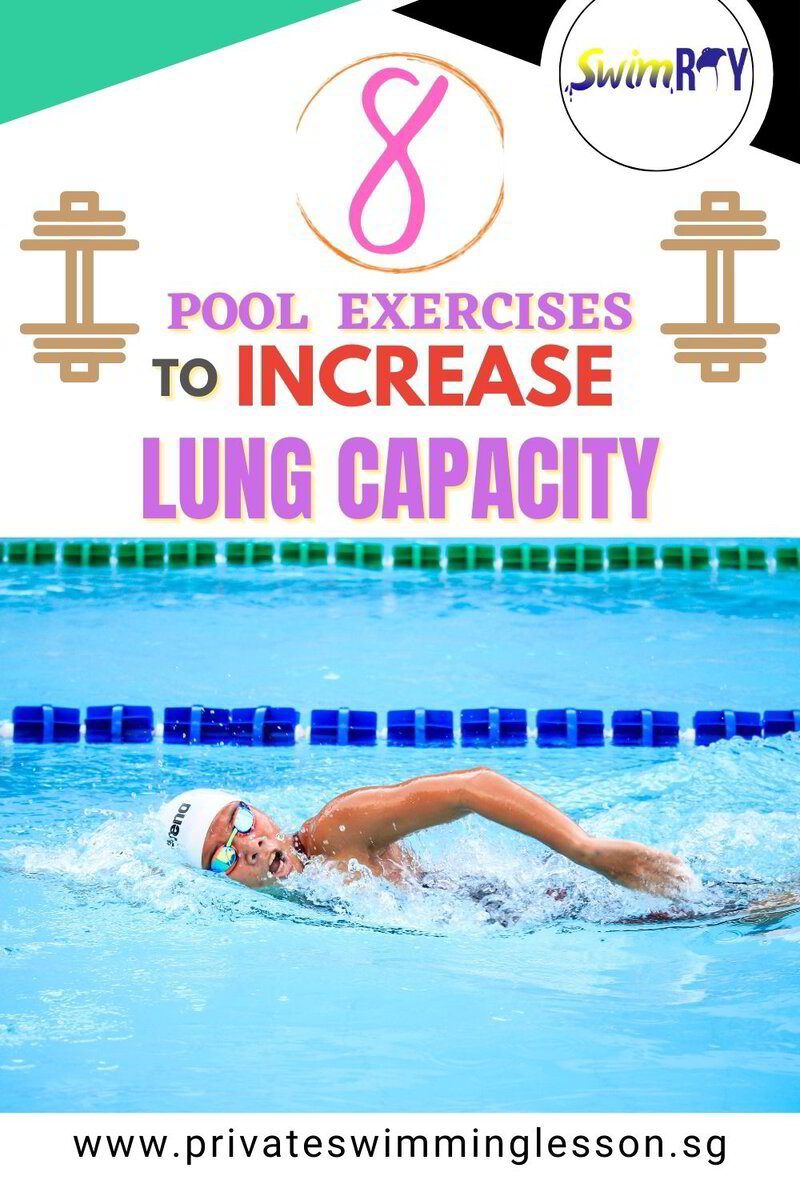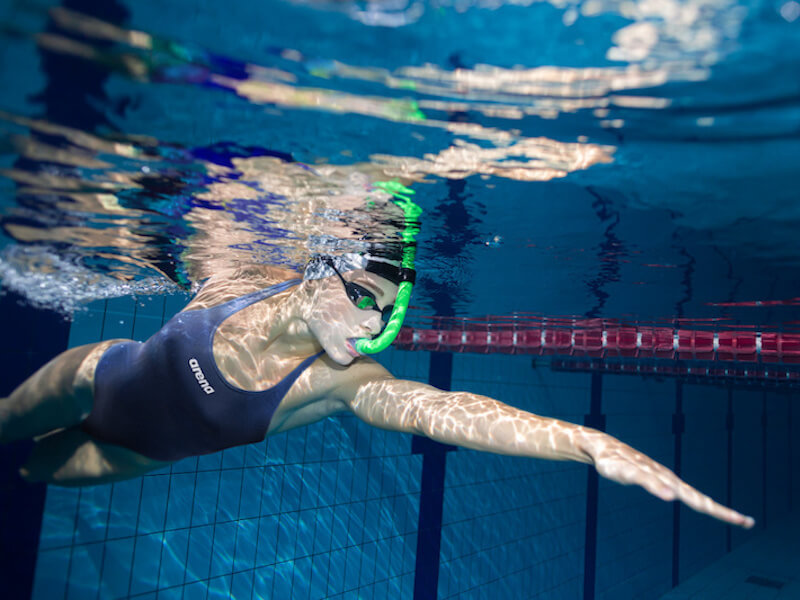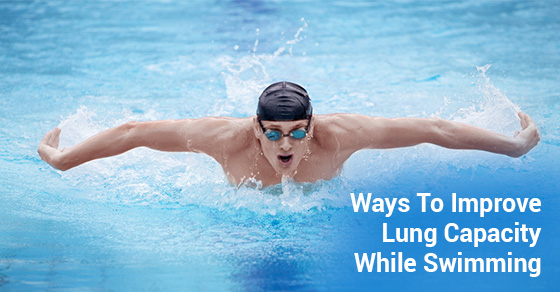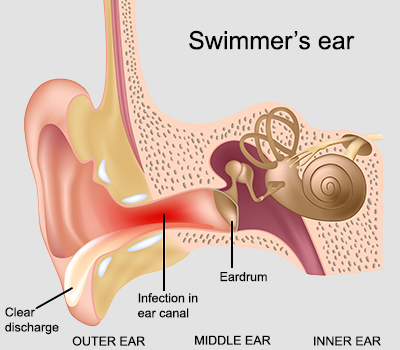Want to swim longer without running out of breath? Boosting your lung capacity can help.
Swimming requires strong lungs for better performance. Improving lung capacity means you can swim longer distances with ease. It’s not just about fitness; it’s about breathing better and more efficiently. Whether you are a beginner or a seasoned swimmer, enhancing your lung capacity can make a significant difference.
In this blog, we’ll explore effective methods to increase lung capacity for swimming. Learn the best exercises and techniques to boost your breathing power in the water. By the end, you’ll be ready to take your swimming to the next level. So, let’s dive into the secrets of better breathing for swimmers!
Importance Of Lung Capacity In Swimming
Swimming demands a lot from your body, especially your lungs. The importance of lung capacity in swimming cannot be overstated. Efficient breathing helps you swim longer and faster. It also ensures that your muscles get enough oxygen. This is crucial for maintaining energy and performance.
Benefits Of Enhanced Lung Capacity
Enhanced lung capacity offers several benefits:
- Longer endurance: More oxygen allows for longer swims without fatigue.
- Improved stamina: Better lung capacity means you can maintain high energy levels.
- Faster recovery: More oxygen helps muscles recover quicker after each lap.
- Better stroke efficiency: You can focus more on your strokes and less on breathing.
Impact On Performance
Good lung capacity impacts your swimming performance in many ways:
- Reduced fatigue: You won’t tire as easily, allowing you to swim longer.
- Improved speed: More oxygen helps you swim faster with less effort.
- Enhanced focus: Better breathing means you can concentrate on technique.
- Increased confidence: Knowing you can breathe efficiently boosts your confidence.
Building better lung capacity is not just for elite swimmers. It’s essential for anyone who wants to improve their swimming skills. Simple exercises and consistent practice can make a big difference.
Breathing Exercises
Breathing exercises help increase lung capacity for swimming. Focusing on proper breathing techniques can make a big difference. These exercises can strengthen your lungs and improve your overall swimming performance.
Diaphragmatic Breathing
Diaphragmatic breathing, also known as belly breathing, uses the diaphragm muscle. To practice, lie on your back with a hand on your chest and another on your belly. Take a deep breath in through your nose, allowing your belly to rise as you fill your lungs. Exhale slowly through your mouth, feeling your belly fall.
Repeat this exercise for a few minutes daily. This technique can help you take deeper breaths. It also helps increase oxygen intake and improves lung efficiency.
Pursed-lip Breathing
Pursed-lip breathing helps control your breathing rate. This technique is easy to practice. Inhale slowly through your nose for two counts. Then, purse your lips as if you are about to whistle. Exhale slowly through your pursed lips for four counts.
Practice this exercise to improve your lung function. It can help you maintain a steady breathing rhythm while swimming. Over time, you may notice an increase in lung capacity.
Cardiovascular Training
Cardiovascular training plays a crucial role in increasing lung capacity for swimming. It strengthens your heart and lungs, making it easier to take in oxygen and deliver it to your muscles. By incorporating these exercises into your routine, you’ll swim longer and more efficiently.
Running And Cycling
Running and cycling are excellent cardiovascular exercises. They increase your heart rate and improve lung capacity. Try to run or cycle at a steady pace for 30 minutes daily. This will gradually improve your stamina and endurance.
Interval Training
Interval training involves short bursts of intense activity followed by rest. This method challenges your lungs and heart. Start with 1-minute high-intensity sprints, followed by 2 minutes of walking. Repeat this cycle for 20 minutes. Over time, your body will adapt and your lung capacity will improve.

Credit: privateswimminglesson.sg
Swimming Drills
Swimming drills are essential for increasing lung capacity. They help you hold your breath longer and improve your efficiency in the water. These drills are designed to challenge and develop your breathing control. By practicing specific techniques, you can enhance your overall swimming performance.
Hypoxic Training
Hypoxic training involves swimming with limited breaths. This drill forces your body to use oxygen more efficiently. Start by taking fewer breaths during a set distance. For example, breathe every five strokes instead of every three. Gradually increase the number of strokes between breaths as you improve.
This type of training can be tough at first. Your body needs time to adapt. Stay consistent, and you will notice significant improvements in your lung capacity and stamina.
Underwater Kicking
Underwater kicking is another effective drill for lung capacity. It involves swimming underwater for as long as possible. Start with short distances, like 10 meters. Increase the distance as your lung capacity improves.
Focus on strong, consistent kicks. Maintain a streamlined body position to reduce drag. This drill not only enhances your lung capacity but also strengthens your legs and core.
Practice these swimming drills regularly. They will help you breathe better and swim faster. Remember to stay patient and consistent in your training. Your lung capacity will improve over time.
Strength Training
Strength training plays a vital role in increasing lung capacity for swimming. It not only improves overall strength but also enhances endurance. For swimmers, strong muscles help to maintain proper form and reduce fatigue. This allows for more efficient breathing. Let’s dive into some key strength training exercises.
Core Workouts
A strong core is essential for swimmers. It helps to stabilize the body in the water. Planks are an excellent core workout. Start by holding a plank position for 30 seconds. Gradually increase the duration as you get stronger. Another great exercise is the Russian twist. Sit on the floor, lean back slightly, and twist your torso from side to side. Aim for 20 twists on each side.
Leg raises also target the core. Lie flat on your back. Raise your legs to a 90-degree angle, then slowly lower them. This exercise strengthens the lower abs. Perform 3 sets of 15 repetitions.
Upper Body Exercises
Upper body strength is crucial for swimmers. It aids in powerful strokes and efficient breathing. Push-ups are a fundamental exercise. They work the chest, shoulders, and triceps. Start with 3 sets of 10 push-ups. Increase the number as you build strength.
Pull-ups are another effective upper body exercise. They target the back and biceps. If pull-ups are too difficult, try using resistance bands for assistance. Aim for 3 sets of 5 pull-ups to start.
Dumbbell rows also strengthen the upper body. Hold a dumbbell in each hand. Bend forward at the waist, keeping your back straight. Pull the dumbbells towards your waist, then lower them. Perform 3 sets of 12 repetitions.
Flexibility And Stretching
Flexibility and stretching play a crucial role in increasing lung capacity for swimming. Stretching helps improve the range of motion in your muscles and joints. This allows for deeper and more efficient breathing. Flexibility exercises also reduce the risk of injuries, keeping you in top shape for swimming.
Dynamic Stretching
Dynamic stretching involves moving parts of your body. These stretches help warm up your muscles and increase blood flow. Arm circles and leg swings are excellent examples. They prepare your muscles for the physical demands of swimming. Perform dynamic stretches before swimming to enhance your performance.
Yoga For Swimmers
Yoga can greatly benefit swimmers. It improves flexibility and strengthens the core. Poses like the Downward Dog and Cobra stretch the chest and lungs. These poses also enhance breathing techniques. Consistent yoga practice increases lung capacity and promotes relaxation.
Monitoring Progress
Monitoring your progress is essential to increasing lung capacity for swimming. Regularly measuring your improvements helps you stay on track and make necessary adjustments. This section will guide you on tracking your lung capacity and adjusting your training plans effectively.
Tracking Lung Capacity
Tracking lung capacity involves recording your measurements over time. You can use a spirometer to measure your lung capacity. A simple method is to hold your breath and time how long you can hold it. Record this data in a journal or a digital tracker.
| Week | Hold Time (seconds) |
|---|---|
| 1 | 20 |
| 2 | 25 |
| 3 | 30 |
Use the data to see patterns and improvements. This helps in identifying what exercises are working best for you.
Adjusting Training Plans
Based on your tracking data, you might need to adjust your training plans. If your hold times are not improving, try different breathing exercises. For instance, include deep breathing, diaphragmatic breathing, or interval training in your routine.
- Deep Breathing: Breathe deeply and hold for a few seconds before exhaling.
- Diaphragmatic Breathing: Focus on expanding your diaphragm rather than your chest.
- Interval Training: Alternate between high-intensity and low-intensity exercises.
Adjusting your training plans ensures continuous progress. Experiment with different techniques and find what works best for you.

Credit: instaswimusa.com
Nutrition And Hydration
Nutrition and hydration play a vital role in increasing lung capacity for swimming. Proper diet and adequate water intake are essential. These help keep lungs healthy and functioning at their best. This section will explore the importance of nutrition and hydration for swimmers.
Foods For Lung Health
Choosing the right foods can improve lung function. Here are some foods to consider:
- Leafy greens: Spinach, kale, and Swiss chard are rich in vitamins and antioxidants.
- Berries: Blueberries, strawberries, and raspberries reduce inflammation and support lung health.
- Fatty fish: Salmon, mackerel, and sardines provide omega-3 fatty acids, which reduce lung inflammation.
- Nuts and seeds: Almonds, walnuts, and chia seeds offer healthy fats and vitamins.
- Citrus fruits: Oranges, grapefruits, and lemons are high in vitamin C, which boosts immunity and lung function.
Incorporate these foods into your diet. They provide essential nutrients. They help maintain healthy lungs and support increased lung capacity.
Importance Of Staying Hydrated
Hydration is crucial for lung health. Water helps thin mucus in the lungs, making it easier to breathe. Dehydration can lead to thick mucus, which can restrict airflow.
Here are some tips to stay hydrated:
- Drink at least 8 glasses of water daily.
- Eat water-rich foods like cucumbers, watermelon, and celery.
- Carry a water bottle and sip throughout the day.
- Avoid excessive caffeine and alcohol, as they can dehydrate the body.
Staying hydrated ensures your lungs function efficiently. It helps maintain and increase lung capacity for swimming.

Credit: blog.arenaswim.com
Frequently Asked Questions
What Exercises Increase Lung Capacity For Swimming?
Breathing exercises, such as diaphragmatic breathing, can increase lung capacity. Also, aerobic exercises like running and cycling help improve overall lung function.
How Often Should I Practice Breathing Exercises?
Practice breathing exercises daily for the best results. Consistency is key to improving lung capacity over time.
Does Swimming Underwater Improve Lung Capacity?
Yes, swimming underwater challenges your lungs and helps improve your breath-holding ability, enhancing lung capacity over time.
Can Yoga Help Increase Lung Capacity?
Yoga, particularly pranayama breathing exercises, can significantly improve lung function and capacity. It promotes controlled and deep breathing.
Conclusion
Improving lung capacity can significantly enhance your swimming performance. Practice deep breathing exercises regularly. Incorporate swimming drills that focus on breath control. Consistent practice leads to gradual improvement. Keep track of your progress over time. Stay patient and persistent in your efforts.
Remember, every breath counts. Implement these tips and watch your lung capacity grow. Enjoy the journey to better swimming and greater lung power.



